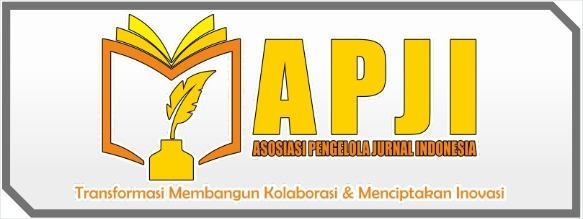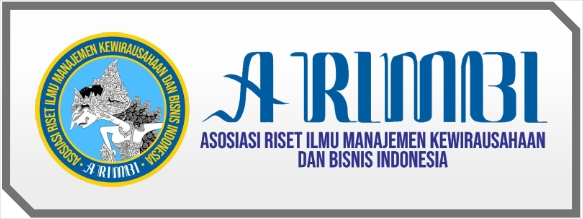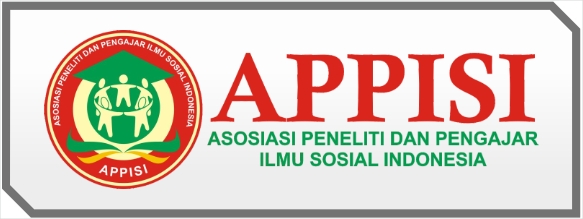Manajemen Sumber Daya Manusia Hijau (Green HRM): Tren Penting Untuk Mendukung Kinerja Berkelanjutan
DOI:
https://doi.org/10.59581/jrim-widyakarya.v2i2.3091Keywords:
green human resources management, Human resources, Eco-Friendly PracticesAbstract
Amid the issue of increasing environmental damage due to production processes, green resource management is needed to minimize these conditions. Green resource management is a company policy in managing human resources sustainably by involving environmental aspects to preserve nature in company management. The increasing role of sustainable development leads to the implementation of environmental issues into the mission, goals, and policies of companies in all functional areas, including human resource management (HRM). This research is a qualitative descriptive study. Descriptive research is aimed at explaining the concept of implementing Green Human Resources Management (GHRM) as a company strategy in the form of efforts to increase productivity and the company's commitment to maintaining environmental sustainability.
References
Ahmad, S. (2015). Green Human Resource Management: Policies and practices. Cogent Business & Management, 2(1), 1030817.
Appelbaum, E., Bailey, T., Berg, P. and Kalleberg, A. (2000) ManufacturingAdvantage: Why High-Performance Work Systems Pay Off. Ithaca, NY: Cornell University Press.
Cherian, J., & Jacob, J. (2012). A Study Of Green HR Practices And Its Effective Implementation In The Organization: A review.
Greenman, Christopher, et al. "Patterns of somatic mutation in human cancer genomes." Nature 446.7132 (2007): 153-158.
Jabbour, C. J. C. & A. B. L. de Sousa Jabbour. (2016). Green human resourcemanagement and green supply chain management: Linking two emergingagendas. Journal of Cleaner Production, 112, 1824-1833.
Jackson, S.E., Renwick, D.W.S., Jabbour, C.J.C. and Müller-Camen, M. (2011) ‘State-of- the-art and future directions for Green Human Resource Management’, Zeitschrift fur Personalforschung (German Journal of HR Research), vol. 25, no. 2, pp. 99–116. ISSN 0179–6437/1862–0000.
Jackson, S.E., Renwick, D.W.S., Jabbour, C.J.C. and Müller-Camen, M. (2011) ‘State-of- the-art and future directions for Green Human Resource Management’, Zeitschrift fur Personalforschung (German Journal of HR Research), vol. 25, no. 2, pp. 99–116. ISSN 0179–6437/1862–0000.
Kim, A., Kim, Y., Han, K., Jackson, S.E. and Ployhart, R. (2017) ‘Multilevel influences onvoluntary workplace green behavior: Individual differences, leader behavior, and coworker advocacy’, Journal of Management, vol. 43, issue 5 (May), pp. 1335– 1358.
Kramar, R. (2014) ‘Beyond strategic human resource management: Is sustainablehuman resource management the next approach?’ International Journal of Human Resource Management, vol. 25, no. 8, pp. 1069–1089.
Masri, H. A., & Jaaron, A. A. M. (2017). Assessing Green Human Resources Management Practices In Palestinian Manufacturing Context: An Empirical Study. Journal of Cleaner Production, 143, 474–489.
Mittal, V. K., & Sangwan, K. S. (2014). Prioritizing Drivers For Green Manufacturing: Environmental, Social And Economic Perspectives. Procedia CIRP, 15, 135–140.
Nawangsari, L. C., & A. H. Sutawidjaya. (2018). The Impact of Human ResourcesPractices Affecting Organization Citizenship Behaviour with Mediating JobSatisfaction in University. In 3rd Annual International Seminar onTransformative Education and Educational Leadership (AISTEEL 2018). AtlantisPress.
Opatha, H. H. D. N. P., & Arulrajah, A. A. (2014). Green Human Resource Management: Simplified General Reflections. International Business Research, 7(8), 101.
Owino, W. A., & Kwasira, J. (2016). Influence Of Selected Green Human Resource Management Practices On Environmental Sustainability At Menengai Oil Refinery Limited Nakuru, Kenya. J. Hum. Resour. Manag, 4, 19–27.
Rayner, J. and Morgan, D. (2017) ‘An empirical study of “green” workplacebehaviours: Ability, motivation and opportunity’, Asia Pacific Journal of Human Resources, Early View, pp. 1–23, DOI: 10.1111/1744-7941.12151. Accessed 4 May 2017.
Renwick, D.W.S., Redman, T. and Maguire, S. (2013) ‘Green HRM: A reviewand research agenda’, International Journal of Management Reviews, vol. 15, no. 1, pp. 1–14.
Ridhi Sharma, N. G. (2015). Green HRM: An Innovative Approach to Environmental Sustainability. 12th AIMS International Conference on Management, 1–15.
Saifulina, N. and Carballo-Penela, A. (2016) ‘Promoting sustainable development at anorganizational level: An analysis of the drivers of workplace environmentallyfriendly behaviour of employees’, Sustainable Development, pp. 1–14. DOI: 10.1002/sd.1654.
Shen, J., Dumont, J. and Deng, X. (2016) ‘Employees’ perceptions of Green HRMandnon-Green employee work outcomes: The social identity and stakeholderperspectives’, Group & Organization Management, pp. 1–29. DOI: 10.1177/1059601116664610.
Sudin, S. (2011). Strategic Green HRM: A Proposed Model That Supports Corporate Environmental Citizenship. International Conference on Sociality and Economics Development, IPEDR, 10, 79–83.
Teixeira, A. A., Jabbour, C. J. C., & de Sousa Jabbour, A. B. L. (2012). Relationship Between Green Management And Environmental Training In Companies Located In Brazil: A Theoretical Framework And Case Studies. International Journal of Production Economics, 140(1), 318–329.
Wang, H., Tong, L., Takeuchi, R. and George, G. (2016) ‘From the editors. Thematicissue on Corporate Social Responsibility. Corporate Social Responsibility: Anoverview and new research directions’, Academy of Management Journal, vol. 59,no. 2, pp. 534–544
Wiernik, B.M., Dilchert, S. and Ones, D.S. (2016) ‘Age and employee green behaviors: A meta-analysis’, Frontiers In Psychology, (April), pp. 1–15. DOI: 10.3389/fpsyg.2016.00194.
Yusoff, Y. M., & M. Nejati. (2019). A conceptual model of green HRMadoption towards sustainability in hospitality industry. In Corporate Social Responsibility: Concepts, Methodologies, Tools, and Applications (pp. 400-421). IGI Global.
Zoogah, D. B. (2011). The Dynamics of Green HRM Behaviors: A Cognitive Social Information Processing Approach. German Journal of Human Resource Management, 25(2), 117– 139.
Downloads
Published
How to Cite
Issue
Section
License
Copyright (c) 2024 Jurnal Riset dan Inovasi Manajemen

This work is licensed under a Creative Commons Attribution-ShareAlike 4.0 International License.














